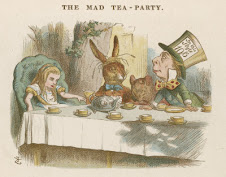Over the course of India's 2009 elections, one facet of the debate has been between those who argue that the world's largest democracy needs to create a two party system and those who maintain that a multiparty system would better serve the people of the country. In a point-counterpoint style set of articles, Sify News covers both sides of the conversation. Salil Jose argues that a two party system would devolve back into a one party dominant state, and therefore a multi-party system is preferable, while Nagarajan Chelliah holds that a two party system with a strong opposition party is the only political framework capable of creating a stable government. As we have seen before, in the argument for the political simple life, for instance, the logical conclusion of the position in favor of the two party system is the one-party state. Chelliah writes: "the lesser the number of parties, the higher the probability of a stable government." Jose counters that a three party system (consisting of the two major parties and a third front coalition) would prove just as stable, while providing effective representation to a wider scope of the electorate.
Subscribe to:
Post Comments (Atom)







No comments:
Post a Comment